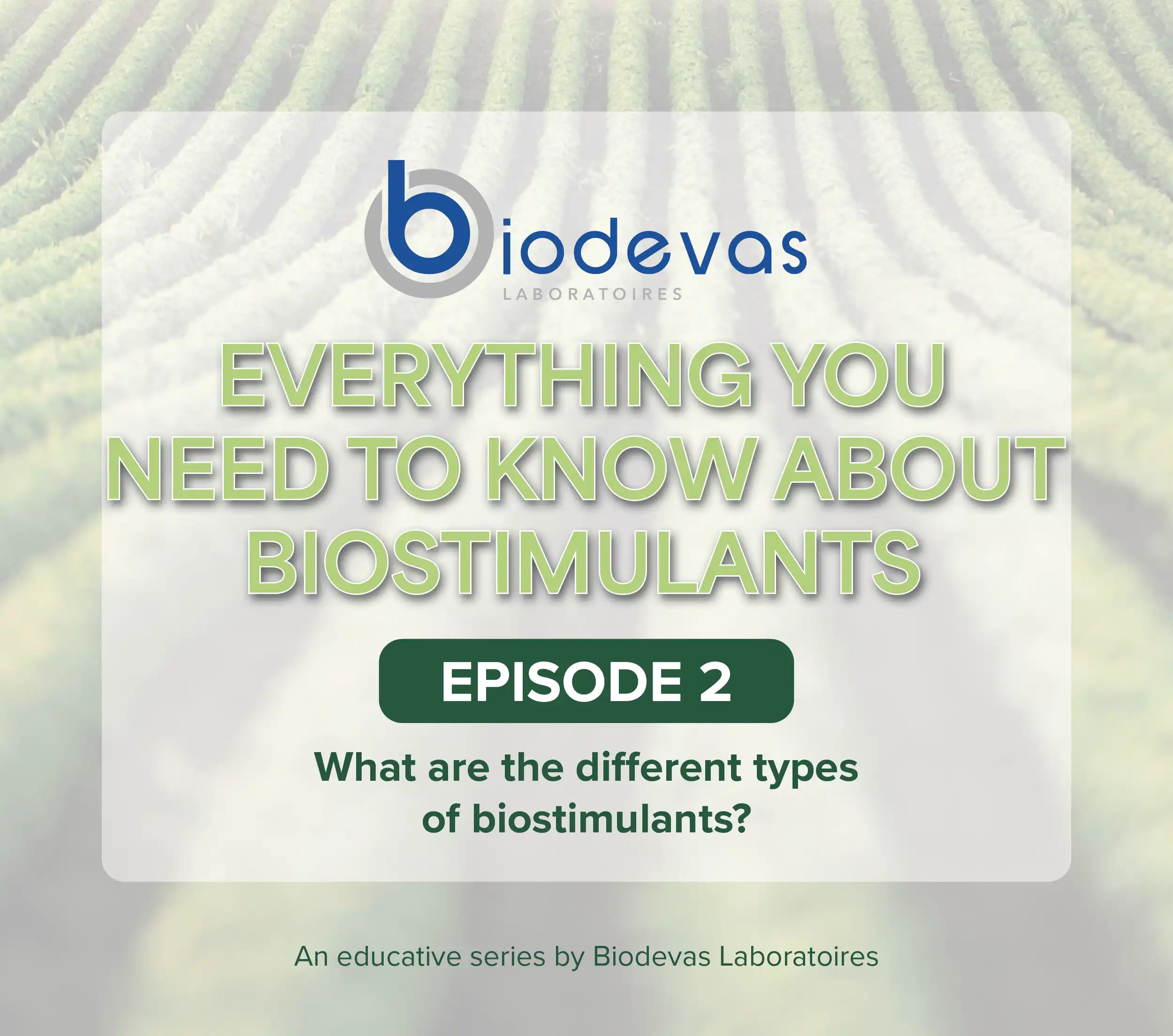What are the different types of biostimulants?

Biostimulants have become essential tools in modern agriculture for achieving sustainable and resilient production. They do not replace fertilizers or plant protection products but instead stimulate the plant’s internal biological processes, improving growth, nutrition, and tolerance to abiotic stress (Du Jardin, 2015).
As Zhang & Schmidt (2020) remind us, “biostimulants are defined by what they do, rather than by what they are.” This functional definition highlights the diversity of products grouped under this term: plant extracts, seaweed, humic substances, beneficial microorganisms… All share a common goal—optimizing plant physiological functions to enhance performance and resilience.
This article offers an overview of the two major categories recognized today: organic biostimulants and microbial biostimulants.
What are the different categories of biostimulants?
1. Organic Biostimulants: Plant and Algae Extracts, Humic Acids, Protein Hydrolysates…
Organic (non-microbial) biostimulants are natural substances of plant or animal origin that influence plant physiology without directly supplying nutrients. Their effectiveness relies on a combination of mechanisms: hormonal modulation, enzymatic stimulation, enhancement of metabolic processes, and improved exchanges between roots and soil.
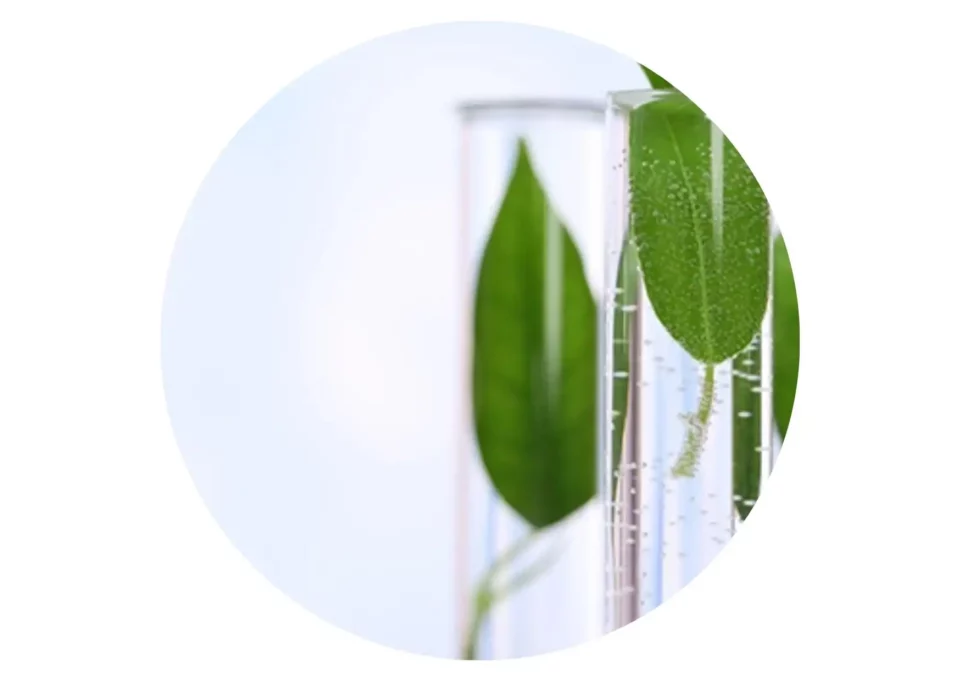
Plant extracts contain a wide array of bioactive compounds such as oligosaccharides, polyphenols, and natural hormones that activate signaling pathways and strengthen defenses against abiotic stress.
Heptamaloxyloglucan, a well-studied oligosaccharide, induces the production of antioxidant enzymes and phytoalexins, thereby increasing tolerance to drought and extreme temperatures (Klarzynski et al., 2000). Polyphenols, meanwhile, protect cells from oxidative damage by neutralizing free radicals and stabilizing cell membranes (Ali et al., 2020).

Algae extracts form another major class of organic biostimulants. Rich in polysaccharides such as laminarin and fucoidan, amino acids, and natural phytohormones, they regulate stomatal opening, improve water balance, and mitigate the adverse effects of salinity and drought.
Numerous studies have demonstrated their effectiveness in viticulture, arboriculture, and horticulture, where they not only enhance stress tolerance but also improve crop quality, for example by increasing sugar content, fruit firmness, and post-harvest preservation (Battacharyya et al., 2015; Shukla et al., 2019).

Humic and fulvic acids, derived from the natural decomposition of organic matter, act at the soil–root interface. They enhance soil structure and porosity, stimulate beneficial microbial activity, and improve the availability of key nutrients such as phosphorus and micronutrients.
In addition, they stimulate root development through auxin-like pathways, allowing plants to explore the soil more efficiently and increase nutrient uptake (Canellas et al., 2015; Soil Science Society of America Journal, 2020).

Protein hydrolysates, obtained through enzymatic, acid, or thermal hydrolysis of plant or animal raw materials, supply plants with free amino acids and small peptides.
These compounds are directly involved in stress protein synthesis, osmoregulation, and cellular repair. Their application promotes recovery after transplanting, supports vigor during active growth, and enhances resilience under limiting conditions, particularly during drought stress (Ertani et al., 2009; Colla et al., 2017).
Taken together, these organic biostimulants exert complementary actions. They stimulate root development, nutrient uptake, hormonal regulation, and antioxidant defenses simultaneously—while being biodegradable, compatible with organic farming, and applicable across a wide range of crops.

2. Microbial Biostimulants: Mycorrhizal Fungi and Beneficial Bacteria
Microbial biostimulants encompass living micro-organisms applied to plants or soils to stimulate growth and stress tolerance, either directly or indirectly. Their primary action occurs in the rhizosphere—the interface between roots, soil, and microbiota—where they reshape biological dynamics and enhance the plant’s ability to absorb nutrients and withstand abiotic stresses.
The most extensively studied groups include mycorrhizal fungi and plant growth-promoting rhizobacteria (PGPR).
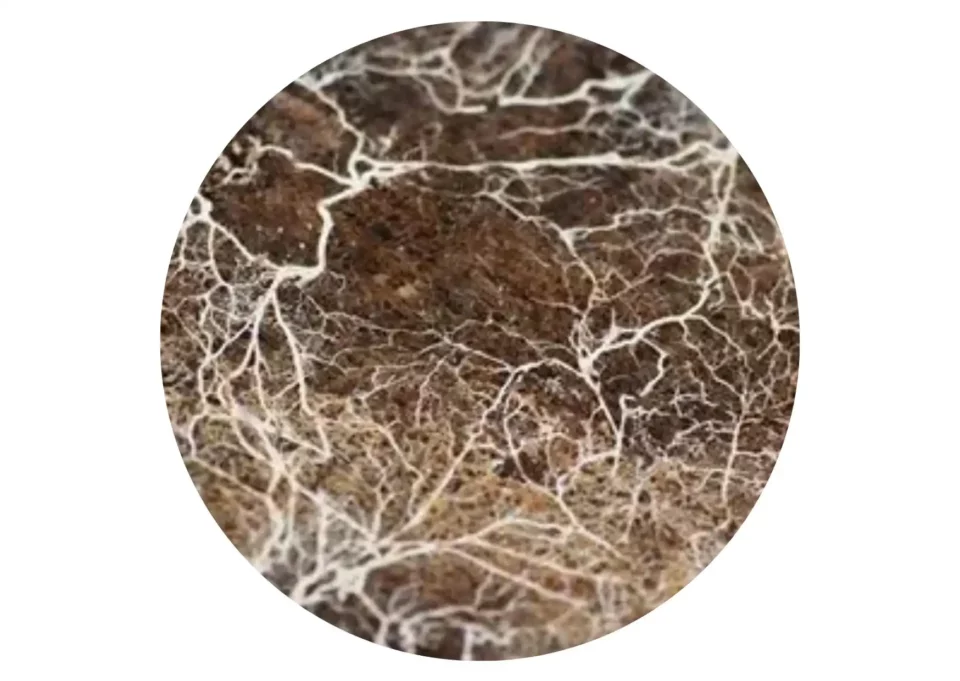
Mycorrhizal fungi, such as Glomus intraradices and Rhizophagus irregularis, establish symbiotic associations with roots. Their hyphae greatly expand the root’s exploration zone, improving the uptake of immobile soil nutrients like phosphorus and certain micronutrients (Smith & Read, 2008).
This symbiosis also enhances tolerance to drought and salinity, as the mycorrhizal network improves water availability and stabilizes ionic balance within plant tissues. In addition, fungi such as Trichoderma spp. not only improve nutrient uptake but also secrete metabolites that trigger systemic defense responses, reinforcing resistance to soil-borne pathogens while stimulating root growth and overall biomass (Harman et al., 2004).
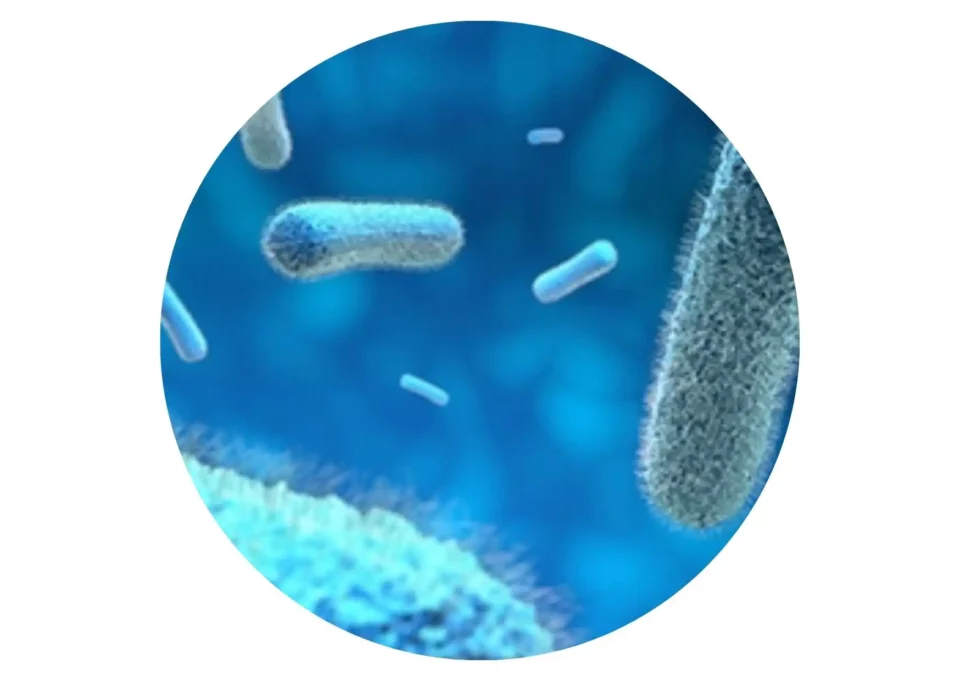
Beneficial bacteria represent another major component of microbial biostimulants. Several PGPR species, including Bacillus amyloliquefaciens, Pseudomonas putida, and Bradyrhizobium japonicum, have proven effective across diverse cropping systems (Kloepper et al., 2004; Hungria & Mendes, 2015).
Their mechanisms of action are diverse: some synthesize phytohormones such as auxins, cytokinins, or gibberellins, directly stimulating root elongation and shoot vigor; others solubilize phosphorus or fix atmospheric nitrogen, thereby increasing nutrient availability. Certain strains also produce ACC deaminase, an enzyme that lowers ethylene accumulation under stress, delaying senescence and supporting plant resilience (Backer et al., 2018).
The performance of microbial biostimulants, however, is highly context-dependent. Factors such as humidity, temperature, soil pH, and the presence of native microbial communities strongly influence colonization and activity. Their success therefore requires careful selection of the right strains for each crop and precise application strategies, whether via seed coating, soil inoculation, or fertigation. Advances in biotechnology are helping overcome these challenges, with techniques such as freeze-drying, microencapsulation, and the synergistic formulation of multiple strains improving stability and efficacy (Yakhin et al., 2017).
Taken together, microbial biostimulants provide a powerful complement to organic biostimulants. Beyond enhancing nutrition, they foster the development of a protective, functional root ecosystem that strengthens overall plant health and resilience in the face of environmental stresses.
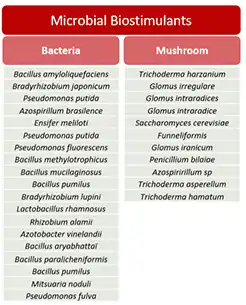
Biostimulant Manufacturing Process
The manufacturing process for biostimulants varies according to the type of raw material, but the objective remains the same: to preserve the integrity and efficacy of bioactive compounds while ensuring product stability and safe use. Rather than using raw biomass, manufacturers generally extract active fractions or select microbial strains to better control quality and ensure reproducible effects in the field (Yakhin et al., 2017).
Microbial biostimulants are produced by culturing carefully selected strains of bacteria or fungi under controlled conditions. These microorganisms are multiplied through fermentation and then stabilized using techniques such as lyophilization, which maintains their viability and biological activity over long storage periods (Backer et al., 2018). Once applied, the strains reactivate in contact with water and soil organic matter—an essential step for effectiveness. Formulation methods such as seed coating, micro-granulation, or encapsulation further facilitate their integration into crop management practices and ensure optimal placement in the rhizosphere (Rouphael & Colla, 2020).
Non-microbial biostimulants, derived from plant or animal raw materials, rely on various extraction and processing techniques to isolate active molecules:
- Enzymatic extraction releases peptides and small amino acids that are easily assimilated by plants and particularly effective in stimulating root growth (Ertani et al., 2009; Colla et al., 2017).
- Aqueous or thermal extraction, often used for algae, concentrates soluble polysaccharides such as laminarin or mannitol, which play key roles in osmotic regulation and stress tolerance (Battacharyya et al., 2015).
- Acid or alkaline hydrolysis is applied to lignocellulosic materials, producing oligosaccharides capable of inducing natural defense mechanisms (Klarzynski et al., 2000).
- Solvent extraction allows the concentration of specific compounds such as polyphenols or natural phytohormones, while removing undesirable components (Shukla et al., 2019).

Beyond extraction, formulation technologies are crucial for ensuring field performance.
Microencapsulation, for instance, protects active compounds from degradation caused by light, oxidation, or soil pH, while enabling gradual and targeted release in the root zone (Yakhin et al., 2017).
Other formats—concentrated liquid solutions, soluble powders, or granules—adapt biostimulants to diverse application methods and improve distribution uniformity and bioavailability (Rouphael & Colla, 2020).
Together, these manufacturing and formulation steps are decisive in guaranteeing stability, safety, and consistent performance of biostimulants under variable agricultural conditions. They also explain the differences observed between commercial products and highlight the importance of rigorous industrial process control.
Advantages and Differences Between Biostimulant Types
Each category of biostimulant has its own specificities, linked to composition and mode of action. This explains why their performance varies according to crop type, environmental conditions, and application strategy.

Organic biostimulants act broadly on plant physiology. They stimulate root growth, improve nutrient uptake, and enhance overall vitality.
For example, plant extracts rich in polyphenols, amino acids, or oligosaccharides promote tolerance to abiotic stress, while humic acids improve soil fertility and root absorption capacity.
Their biodegradable nature and compatibility with organic farming make them well-suited to agroecological systems. However, because their effects rely on complex mechanisms—hormonal modulation, enzymatic activity, and soil interactions—their impact is often gradual rather than immediate. Efficacy depends heavily on the quality and stability of extracts, as well as application timing, making them particularly valuable for medium-term preventive use rather than emergency interventions.

Microbial biostimulants act directly in the rhizosphere.
Beneficial microorganisms such as Bacillus, Trichoderma, or mycorrhizal fungi (Glomus) colonize roots and interact closely with plants. They facilitate the uptake of phosphorus, nitrogen, and trace elements, while also inducing systemic defense mechanisms that enhance resilience to stress. Studies have shown that these strains can produce visible benefits within weeks of application, such as faster recovery after transplanting, accelerated root growth, and reduced incidence of soil-borne pathogens. However, their efficacy is strongly influenced by environmental conditions—humidity, temperature, pH, and the native soil microbiota can all affect colonization success. To ensure consistent results, microbial products must be precisely positioned within the technical itinerary (e.g., seed coating, soil inoculation at sowing) and applied under non-limiting conditions.
Conclusion
Biostimulants today are far more than complementary inputs: they represent a genuine agronomic lever for meeting the demands of modern agriculture—high-performance, sustainable, and resilient. Whether organic or microbial, their value lies in their ability to activate internal plant mechanisms, strengthen physiology, and improve adaptation to environmental stresses.
Organic biostimulants—derived from plant extracts, algae, humic acids, or protein hydrolysates—act globally and progressively. They modulate hormonal pathways, support mineral nutrition, and increase tolerance to abiotic stress.
Microbial biostimulants, in contrast, rely on living microorganisms that colonize the rhizosphere. By promoting nutrient symbioses and inducing natural defenses, they often deliver rapid and measurable benefits in the field.
The diversity of these products, in both origin and mode of action, makes them complementary and strategic tools for enhancing crop vitality, stabilizing yields, and reducing reliance on chemical inputs. Their effectiveness, however, depends on formulation quality, application timing, and environmental conditions. For this reason, they must be integrated into a reasoned crop management strategy, aligned with the agronomic objectives of each farm.
With recent advances in biotechnology, bioactive compound extraction, and formulation, biostimulants are entering a phase of unprecedented innovation. They are poised to play a central role in the agroecological transition, reconciling productivity with ecosystem stewardship. Their development points toward an agriculture that uses fewer inputs, is more resilient to climate challenges, and is firmly anchored in long-term sustainability.
In the next article of this series, we will focus on plant-based biostimulants, exploring their specific mechanisms of action and practical applications in the field.
Have questions? Feel free to contact us—our team is here to help.
References
- Ali, H., Alqurashi, M., Hassan, S. (2020). Polyphenol-mediated antioxidant response in plants under stress. Frontiers in Plant Science, 11: 853.
- Backer, R., Rokem, J. S., Ilangumaran, G., Lamont, J., Praslickova, D., Ricci, E., Subramanian, S., Smith, D. L. (2018). Plant growth-promoting rhizobacteria: Context, mechanisms of action, and roadmap to commercialization of biostimulants for sustainable agriculture. Frontiers in Plant Science, 9:1473.
- Battacharyya, D., Babgohari, M. Z., Rathor, P., Prithiviraj, B. (2015). Seaweed extracts as biostimulants in horticulture. Scientia Horticulturae, 196, 39-48.
- Canellas, L. P., Olivares, F. L., Aguiar, N. O., Jones, D. L., Nebbioso, A., Mazzei, P., Piccolo, A. (2015). Humic and fulvic acids as biostimulants in horticulture. Plant and Soil, 383, 3-41.
- Colla, G., Nardi, S., Cardarelli, M., Ertani, A., Lucini, L., Canellas, L. P., Rouphael, Y. (2017). Protein hydrolysates as biostimulants in horticulture. Scientia Horticulturae, 196, 28-38.
- Du Jardin, P. (2015). Plant biostimulants: Definition, concept, categories and regulation. Scientia Horticulturae, 196, 3-14.
- Ertani, A., Cavani, L., Pizzeghello, D., Brandellero, E., Altissimo, A., Ciavatta, C., Nardi, S. (2009). Biostimulant activity of two protein hydrolysates in the growth and nitrogen metabolism of maize seedlings. Journal of Agricultural and Food Chemistry, 57(4), 1121-1131.
- Harman, G. E., Howell, C. R., Viterbo, A., Chet, I., Lorito, M. (2004). Trichoderma species-opportunistic, avirulent plant symbionts. Nature Reviews Microbiology, 2(1), 43-56.
- Hungria, M., Mendes, I. C. (2015). Nitrogen-fixing bacteria in tropical agriculture. Plant and Soil, 384, 1-26.
- Klarzynski, O., Plesse, B., Joubert, J. M., Yvin, J. C., Kopp, M., Kloareg, B., Fritig, B. (2000). Linear β-1,3 glucans are elicitors of defense responses in tobacco. Plant Physiology, 124, 1027-1038.
- Kloepper, J. W., Ryu, C. M., Zhang, S. (2004). Induced systemic resistance and promotion of plant growth by Bacillus spp. Phytopathology, 94, 1259-1266.
- Rouphael, Y., Colla, G. (2020). Biostimulants in agriculture: Advances and future challenges. Frontiers in Plant Science, 11, 40.
- Shukla, P. S., Borza, T., Critchley, A. T., Prithiviraj, B. (2019). Ascophyllum nodosum-based biostimulants: Sustainable applications in agriculture. Frontiers in Plant Science, 10:655.
- Smith, S. E., Read, D. J. (2008). Mycorrhizal Symbiosis (3rd ed.). Academic Press.
- Yakhin, O. I., Lubyanov, A. A., Yakhin, I. A., Brown, P. H. (2017). Biostimulants in plant science: A global perspective. Frontiers in Plant Science, 7, 2049.
- Zhang, Z., Schmidt, E. (2020). Biostimulants: What They Do, Not What They Are. EBIC Report.
Disclaimer
This series is designed to share practical insights on biostimulants. Each month, we explore a new topic based on our expertise and research.
